What is explosive training?
Explosive training is focusing on using speed and power as the main training stimulus.
While strength involves exerting max force, power involves exerting that force quickly.
Power is different from trying to lift the most weight. We need to train both strength and speed in order to increase power. Typically, explosive training is done at minimal to moderate loads, with weights not exceeding 80% of 1RM, and the goal is to try to lift the weight as fast and as explosively as possible (this can include performing exercises with your bodyweight). However, there is mixed research on what weights work best for “explosive” training, and explosive training requires strength and skill. The type of exercise as well as the weaknesses of the individual and the training goals all matter when programming explosive movements and their prescribed intensities.
How can explosive training be done effectively?
A solid strength base is the foundation of explosive training and this should be achieved before heading into more explosive or plyometric type movements. Train the foundational movements and get strong in these in before implementing power training.
Explosive training should not include a million reps of a “power” type of exercise. (It is not 50 reps of a Power Clean or 50 Box Jumps in a row). Sure, that is great for getting your heart rate up, but it is not accomplishing the goal of power training.
Think quality over quantity for explosive training.
Doing exercises before your explosive exercise to “pre fatigue” is not effective and defeats the purpose if you’re really trying to train for power. If you do a Wall Sit before you try and do a max height Box Jump, don’t be surprised if you don’t hit that max height you are trying to achieve.
When organizing a workout meant to maximize power, less is more. You don’t want too many exercises because by the time you get to the last few you will be too fatigued to get the maximum gains out of that specific exercise. Stick to 3-5 exercises for a power or plyometric workout and make sure you add in enough rest between reps AND sets.

Example Full Body Explosive Training Workout
-
Box Jump, 3 sets of 5 reps – slight rest in between reps, going for max height
-
Plyo Push Up, 3 sets of 5-7 reps – you can do clap push ups if that’s your jam too; goal is maximum height off of the floor for every rep
-
Overhead Medicine Ball Throw, 3 sets of 5 reps for max distance
-
Dumbbell Power Row – 3 sets of 6 reps per arm, use about 50% of the weight you’d use for a max set of 10 on regular reps of dumbbell rows
-
Power Skips, 3 sets of 20 yds, try to lift your knees as high and go as fast as possible maintaining technique
-
Oblique Band Power Twist, 2 sets of 8 reps per side
Explosive Training Requires a Solid Foundation
In conclusion, you need a foundation of strength and stability before implementing power training. Focus on stability, full range of motion, and joint health followed by strength in your movements. From there, add in your power training, but do it in a way that makes sense based on your goals.
Ready to kick your fitness up a notch? Dive into the ‘Stronger than your Boyfriend‘ podcast for expert tips, then join our personal training program! Whether you’re after workout advice or one-on-one coaching, we’ve got your back. Transform your body and mindset starting today. Tune in to the podcast and enlist in our program to conquer those fitness goals together!



